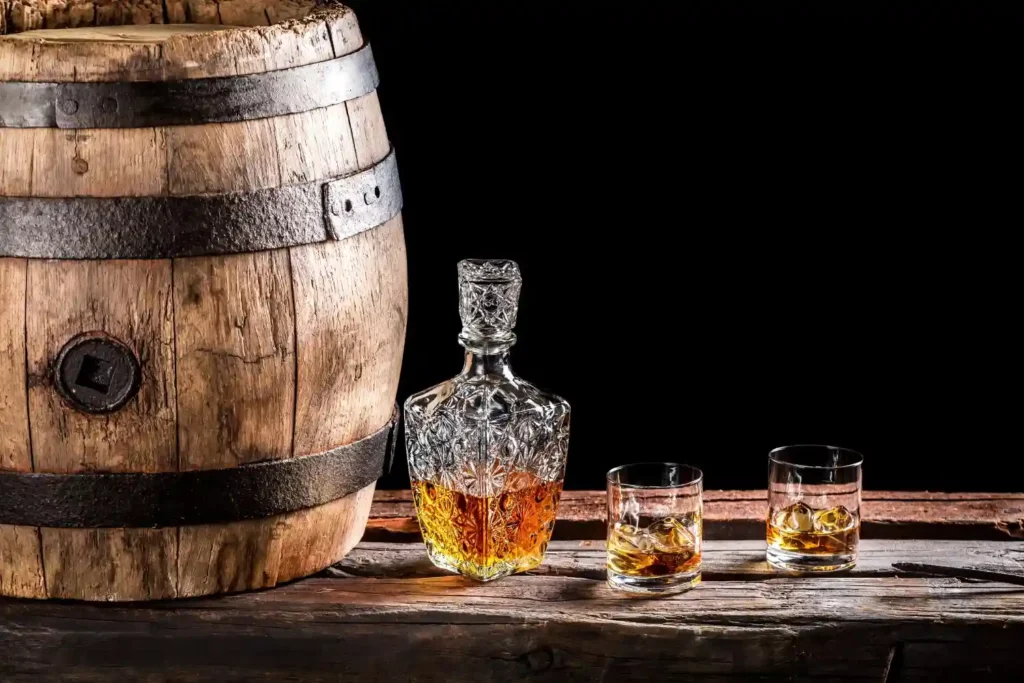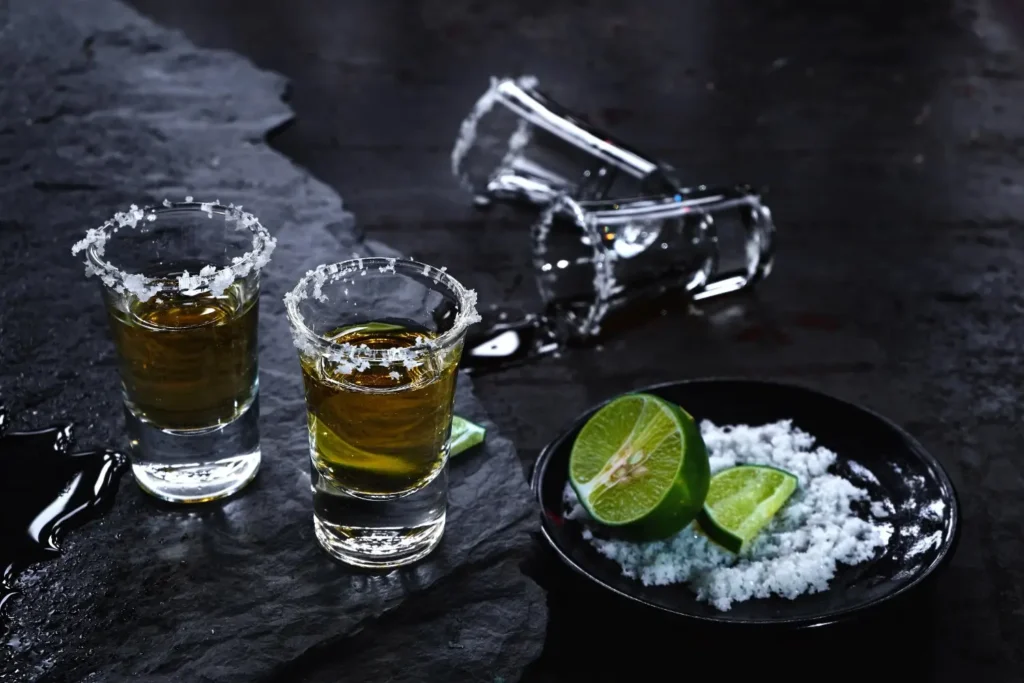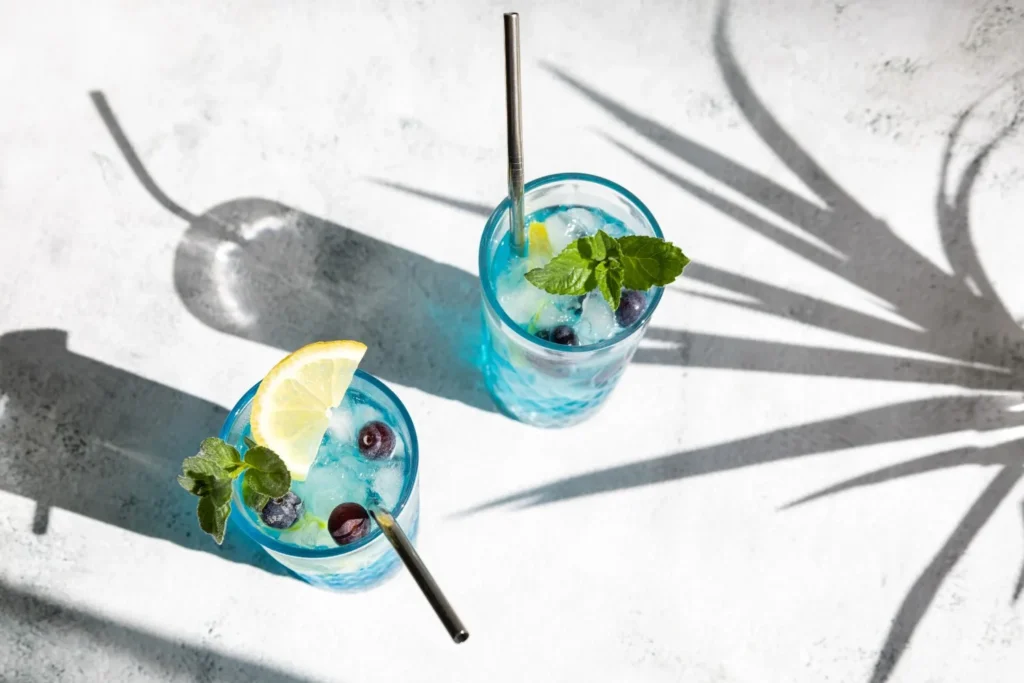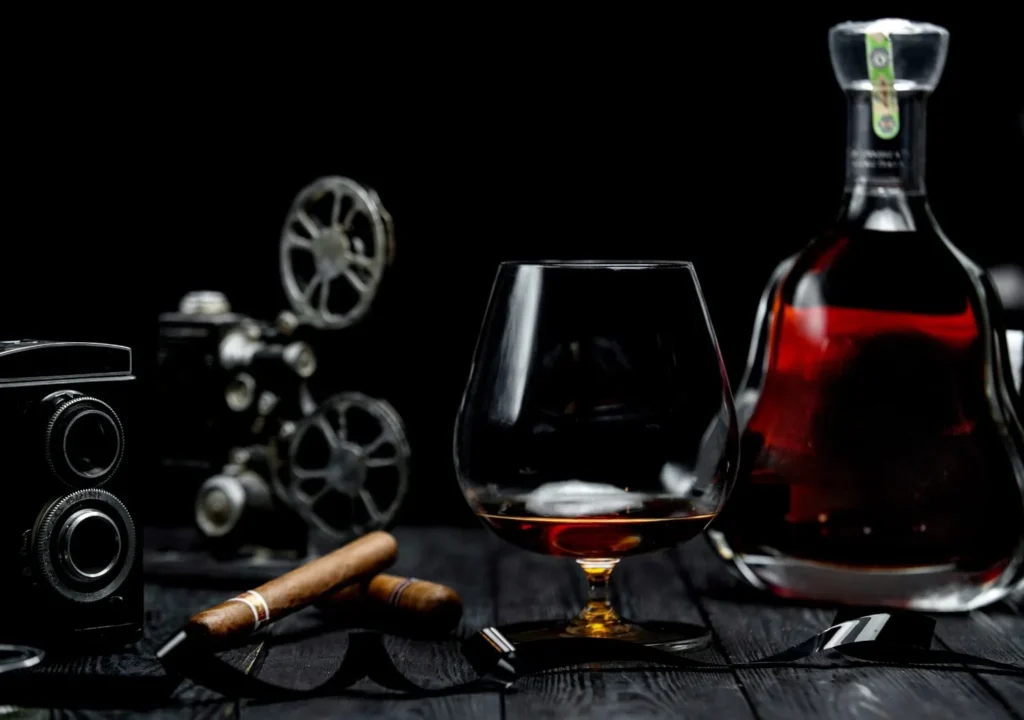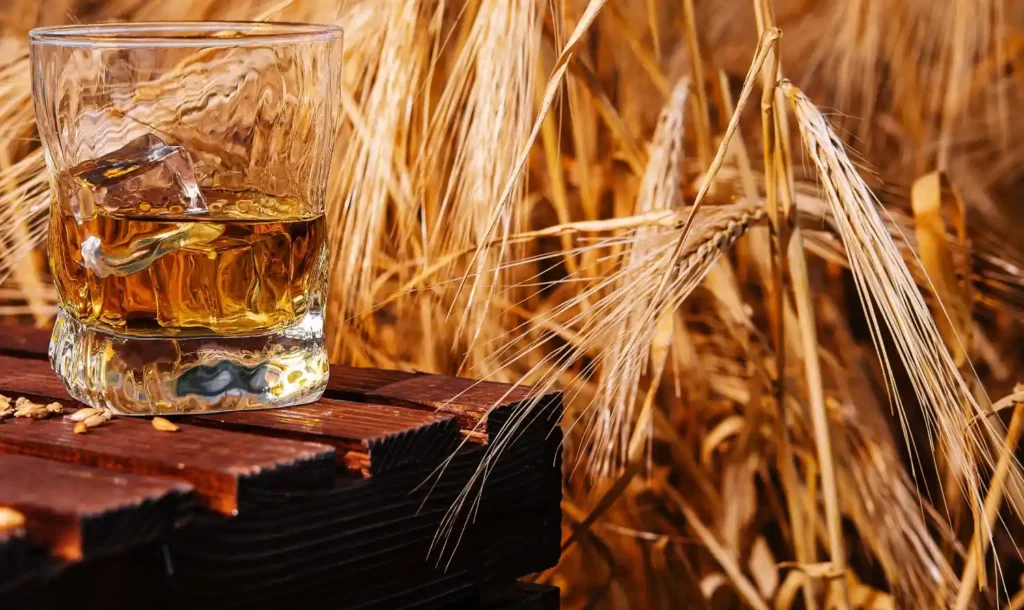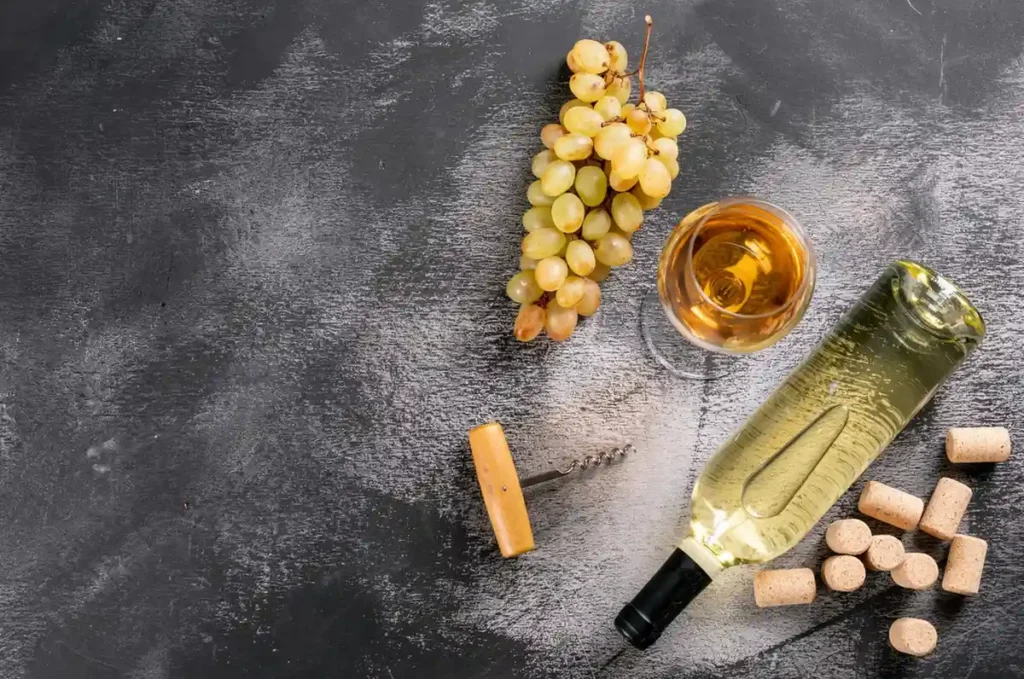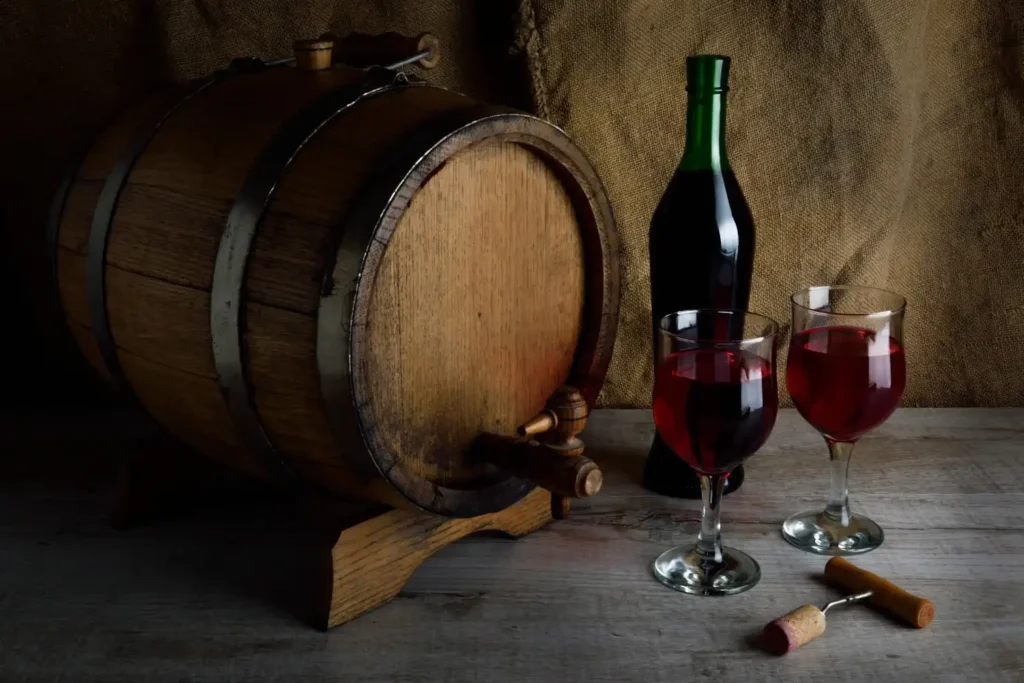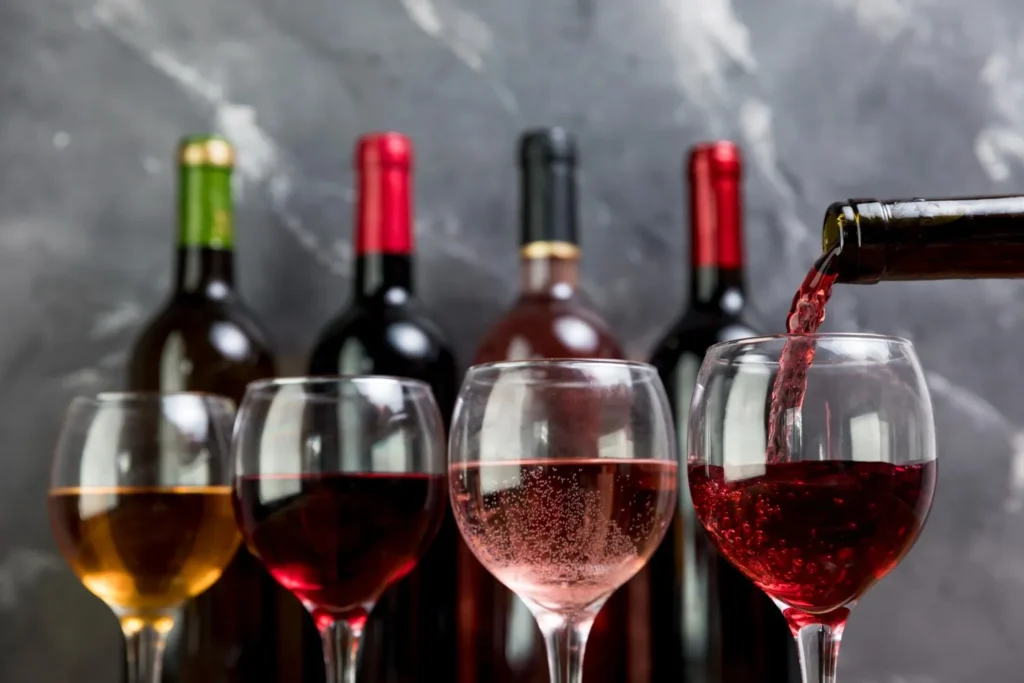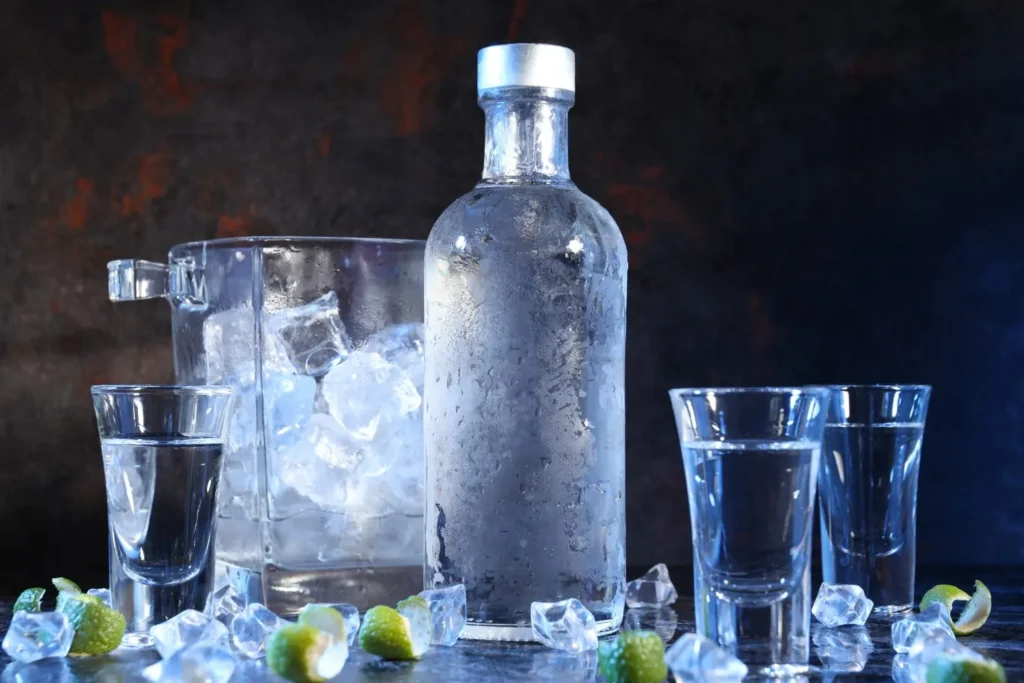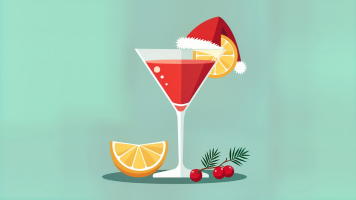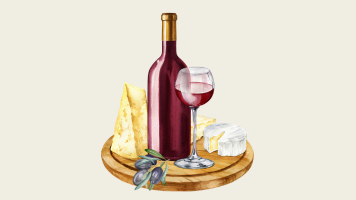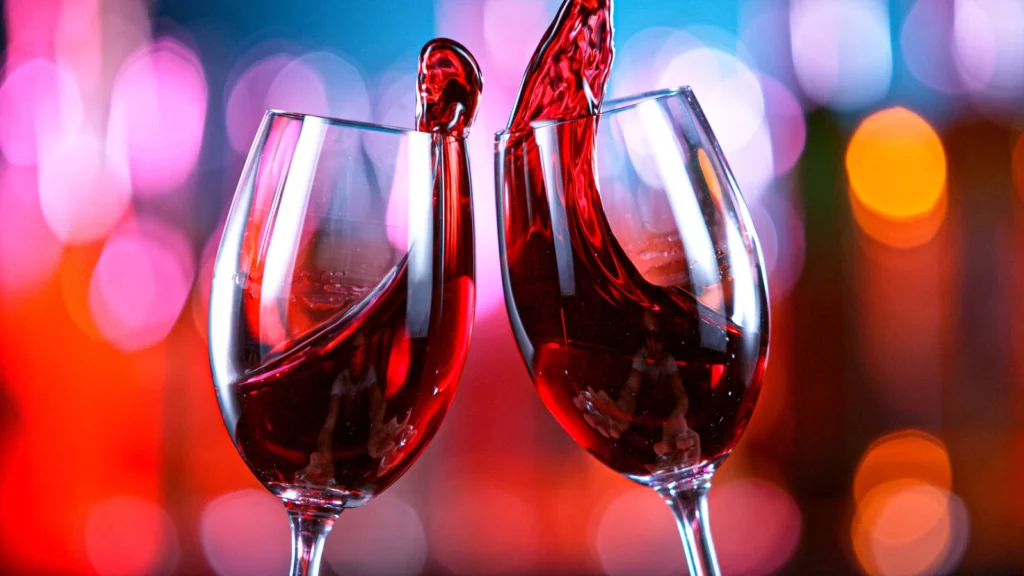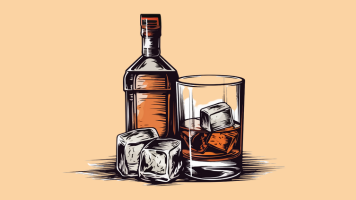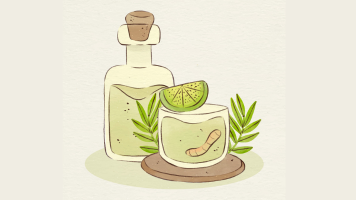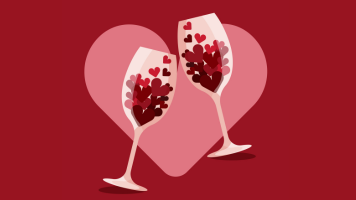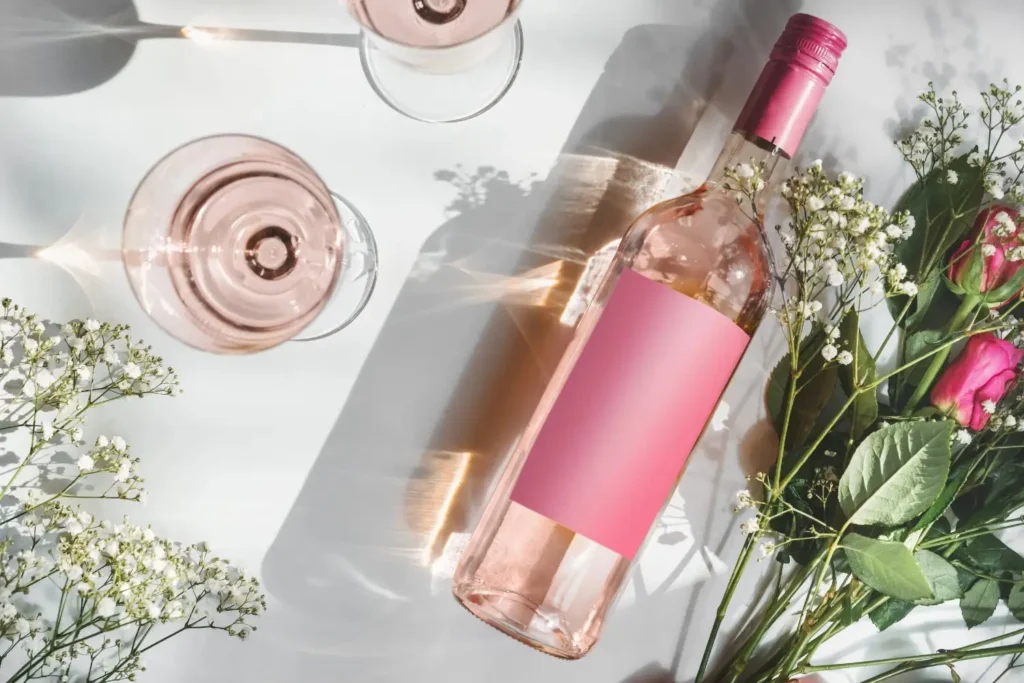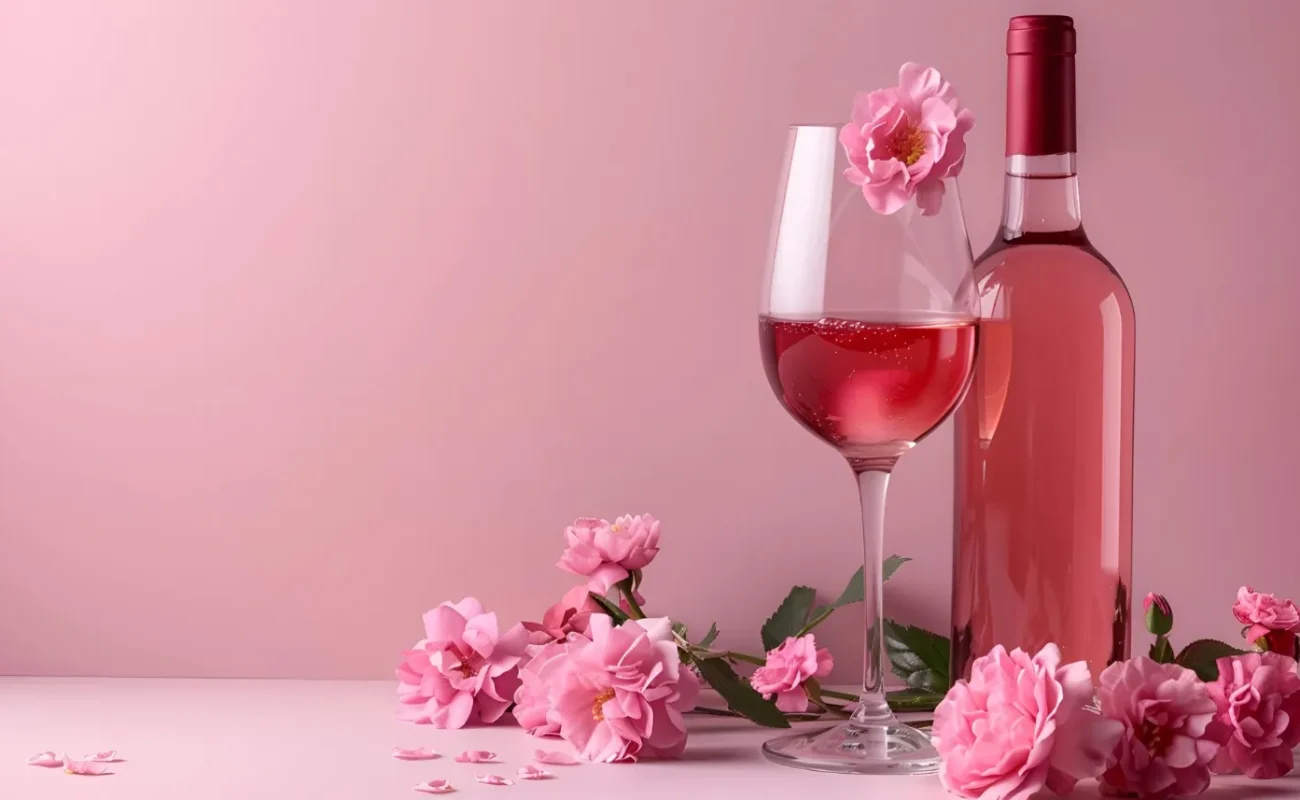
Why Does Rosé Wine’s Pink Sparkle Feel Like Bottled Joy
Rosé wine carries an effortless charm with its soft pink glow and elegant aroma, naturally evokes celebration, style, and artistry. Each glass feels like a sunrise in bloom, a sunlit garden gathering, or a gentle seaside breeze captured in liquid form.
There are a reason rosé wine feels like bottled joy. It is not just the elegant blush hue, the whisper of fruit on the nose, or the light sparkle of a summer evening caught in a flute. It is a wine that tells stories of centuries-old vineyards, Mediterranean sunsets, and artistry passed down through generations. Rosé is a timeless expression of balance, style, and grace. Many consider it the best for celebrations, from quiet evenings to vibrant gatherings.
Rose wine is a poetry in pink
Unlike its bold red cousins or crisp white counterparts, rosé wine is all about subtlety and craftsmanship. Rosé wine is never a simple mix of red and white; it is an artful expression of red grapes, created through a brief contact between the juice and grape skins that imparts its signature pink hue and delicate character. This technique creates its alluring pink shade and delicately layered flavor.
Winemakers treat rosé wine like a masterpiece: choosing grapes with finesse, pressing them gently, and crafting a wine that celebrates freshness, elegance, and vibrancy. The result is a style that is universally approachable yet endlessly sophisticated. Whether you enjoy a light rosé wine for warm afternoons or a dry rosé wine with more depth, each sip reflects skill and artistry.
How Rosé Wine Is Made
Rosé wine owes its beauty to centuries of winemaking tradition. While every winery has its secrets, there are three main techniques:
- Direct Pressing
Right after harvest, the grapes are gently pressed, creating rosé with the palest hues and the freshest, most delicate profiles.
- Short Maceration
Red grapes rest with their skins for just a few hours, allowing more color and structure to infuse the wine. Many summer rosé wine styles from the Mediterranean owe their character to this technique.
- Saignée Method
A small portion of juice is “bled” from red wine fermentations early to create a rosé with depth and richness. This method often results in rosé that is fuller-bodied and expressive.
Types of Rosé Wine
Rosé wine is wonderfully versatile, offering something for every preference. Wine lovers often seek a rosé wine types chart or explore the best types of rosé wine before choosing the perfect bottle:
- Dry Rosé Wine: Crisp, refreshing, and often mineral-driven, perfect for those who enjoy wines with complexity and finesse.
- Sweet Rosé Wine: Fruity and floral, this style delivers bright flavors of strawberries, peaches, and roses, ideal for those who prefer a lush sip.
- Sparkling Rosé: Effervescent and playful, sparkling rosé captures celebration in a glass, with bubbles that accentuate its fresh flavors.
Wines like Vilarnau Cava Rosé Brut showcase how bubbles bring energy and lightness, while Barone Ricasoli Albia Toscano Rosé Wine offers Tuscan elegance with its textured layers.
Understanding rosé wine alcohol percentage also helps buyers choose a style that suits their preference, whether they want something lighter for brunch or fuller-bodied for evening dining
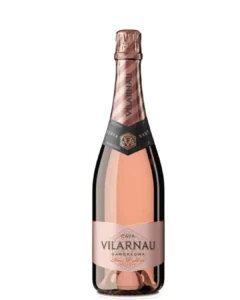
The Global Beauty of Rosé wine
Rosé wine is as much about terroir as technique. From sun-drenched Mediterranean vineyards to the rolling hills of Tuscany, each region offers its own interpretation:
- Provence, France: Pale, ethereal wines with citrus and herbal notes, often seen as the global benchmark for French rosé wine.
- Italy (Rosato): Fuller-bodied like Barone Ricasoli Albia Toscano Rosé Wine, balancing berry richness with savory undertones.
- Spain (Rosado): Vibrant, fruit-forward expressions such as Altozano Tempranillo Syrah Rosé Wine, showcasing bold flavors with elegance.
- Sparkling Rosé Regions: Spain’s Cava scene delivers wines like Vilarnau Cava Rosé Brut, blending sophistication with a playful sparkle.
- New World Winemaking: California and Australia bring creativity to rosé wine, experimenting with grape varieties to create innovative flavor profiles and new types of rosé wine brands.
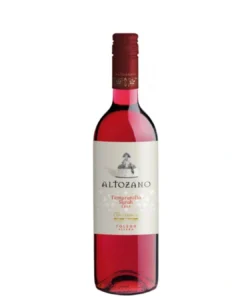
How Rosé Wine Stands Apart from Red and White
While often mistaken as a mix of red and white, rosé is a unique wine style of its own—shaped by tradition, precision, and skilled craftsmanship. The main difference lies in how long the grape skins remain in contact with the juice.
- Red wine spends several weeks fermenting with the skins, which gives it a darker color, fuller body, and stronger tannins.
- White wine is usually made without skin contact, resulting in a pale, crisp wine focused on acidity and freshness.
- Rosé wine is crafted from red grapes with only brief skin contact—lasting just a few hours to a couple of days—giving it its signature blush tone and delicate character. This technique gives rosé its pink hue and subtle layers of fruit, without the heaviness of red wine or the sharpness of white.
Because of this balance, rosé captures the best of both worlds: the refreshing lift of a white wine with the gentle fruit expression of a red. Whether enjoyed as a dry rosé wine, a festive sparkling rosé, or a sweet summer sip, it offers versatility and elegance that make it stand apart from the rest.
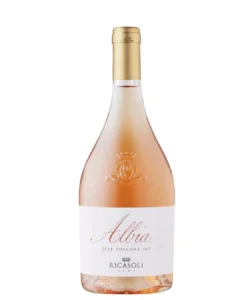
Tasting and Appreciating Rosé Wine
Appreciating rosé is an art. Here is how to fully savor every detail, whether you are at a rosé wine tasting event or enjoying a bottle at home:
- Observe the Color
From pale salmon to vivid coral, rosé’s hue reflects its grape variety and production method. Lighter colors often indicate a crisp style, while deeper shades suggest richness. - Swirl and Smell
Aromas of wild strawberries, watermelon, citrus zest, and even herbs will emerge. Take your time—rosé’s nose is delicate but layered. - Taste Slowly
Take a slow sip and allow the wine to unfold across your palate, revealing its harmony of fruit, lively acidity, and refined structure. Dry rosé tends to be bright and mineral-driven, while sweeter styles are lush and velvety. The rosé wine taste is as diverse as its origins. - Serve with Grace
Rosé wine is best enjoyed chilled but not too cold, allowing its aromas and flavors to shine. Elegant stemware completes the experience.
Rosé Wine Food Pairing with Harmony
Rosé wine is one of the most food-friendly wines, thanks to its versatility:
- Dry Rosé Wine: Pair with grilled seafood, summer salads, or Provençal dishes. Its crisp acidity enhances lighter fare.
- Sweet Rosé Wine: Perfect with fruit tarts, soft cheeses, or spicy dishes where a touch of sweetness balances the heat.
- Sparkling Rosé Wine: Ideal for brunches, canapés, and celebrations—its bubbles refresh the palate between bites.
- Tuscan and Spanish Rosés: Fuller-bodied styles complement Mediterranean cuisine, roasted vegetables, and charcuterie boards.
Rosé wine effortlessly transitions from casual picnics to fine dining, making it a favorite among sommeliers and chefs alike.
Why Rosé wine Feels Like Bottled Joy
In India, imported rosé wines like Vilarnau Cava Rosé Brut (Spain), Barone Ricasoli Albia Toscano Rosé (Italy), and Altozano Rosado (Spain) are gaining popularity for their elegance and versatility.
It embodies a mood, a shade of elegance, and a true celebration of artistry. From its vibrant aromas to its refreshing finish, it captures the essence of artistry and terroir. Whether it is the elegance of a Tuscan Rosato, the festive sparkle of sparkling rosé, or the Provençal mastery of pale French rosé wine, every bottle tells a story.
When you pour your next glass of rosé wine, take a moment to pause and appreciate the experience Admire the delicate hue, savor the aroma, and appreciate the centuries of winemaking tradition that brought this pink masterpiece to your table.
Looking for imported rosé wines in India? Explore Solis Group’s curated collection of Vilarnau, Barone Ricasoli, and Altozano.
FAQs
What is rosé wine?
Rosé wine made from red grapes with brief skin contact, giving it a pink hue and lighter style.
Is rosé always sweet?
Rosé wine is not limited to one style—it spans from crisp, bone-dry expressions to lusciously sweet varieties, ensuring there is a perfect option for every taste.
How is rosé different from red wine?
Red wine spends weeks fermenting on grape skins, while rosé wine only rests briefly, resulting in a lighter color and flavor.
What is sparkling rosé wine?
A style of rosé wine made bubbly through secondary fermentation, often associated with elegance and celebration.
Which grapes make the best rosé wine?
Varieties like Grenache, Syrah, Sangiovese, and Tempranillo are commonly used, but almost any red grape can make rosé wine.
Where does the best rosé wine come from?
While Provence sets the benchmark for rosé, regions like Tuscany, Spain, and California are redefining pink wine with their bold, elegant interpretations.
How should rosé wine be served?
Slightly chilled, in elegant stemware, to allow its aromas and flavors to shine.
Can rosé wine age well?
Most rosé wine are best enjoyed young, but certain high-quality styles can age gracefully.
-
 How distillers perfect mastery in Blended whiskey v single barrel
How distillers perfect mastery in Blended whiskey v single barrel -
 How Every Region Leaves Its Mark on Vodka
How Every Region Leaves Its Mark on Vodka -
 How to Store Gin When Your Guests Think It is Open Bar
How to Store Gin When Your Guests Think It is Open Bar -
 Why Does Cognac Carry Such a Luxurious Price Tag
Why Does Cognac Carry Such a Luxurious Price Tag -
 Why Does Single Malt Whiskey Win Single Grain Battles
Why Does Single Malt Whiskey Win Single Grain Battles -
 White Wine Guide to Help You Pick the Right Selection
White Wine Guide to Help You Pick the Right Selection -
 Solis Group Representation on the Global Stage at TFWA, Cannes 2025
Solis Group Representation on the Global Stage at TFWA, Cannes 2025 -
 How did port wine bottles grow stylish over decades
How did port wine bottles grow stylish over decades -
 What’s Your Wine Persona according to the Color Chart
What’s Your Wine Persona according to the Color Chart -
 Make every hangout memorable with vodka
Make every hangout memorable with vodka
-
 Christmas Cocktails You Can Make at Home
Christmas Cocktails You Can Make at Home -
 Sound Of Christmas Wine And Cheese?
Sound Of Christmas Wine And Cheese? -
 A Fresh Take on New Year’s Resolutions
A Fresh Take on New Year’s Resolutions -
 The Art of Smelling Wine Like a True Connoisseur
The Art of Smelling Wine Like a True Connoisseur -
 Looking for the Best Wine? Here's Where to Find It!
Looking for the Best Wine? Here's Where to Find It! -
 Read This Before You Buy Your Dad a Whisky.
Read This Before You Buy Your Dad a Whisky. -
 The Art of Pairing Wine with Indian Food
The Art of Pairing Wine with Indian Food -
 Whiskey on the Rocks — Cool Choice or Flavor Mistake?
Whiskey on the Rocks — Cool Choice or Flavor Mistake? -
 The Ingredients & Botanicals That Define Gin
The Ingredients & Botanicals That Define Gin -
 Seven Days of Love — Wine for Valentine’s Week
Seven Days of Love — Wine for Valentine’s Week
-
 How distillers perfect mastery in Blended whiskey v single barrel
How distillers perfect mastery in Blended whiskey v single barrel -
 How Every Region Leaves Its Mark on Vodka
How Every Region Leaves Its Mark on Vodka -
 How to Store Gin When Your Guests Think It is Open Bar
How to Store Gin When Your Guests Think It is Open Bar -
 Why Does Single Malt Whiskey Win Single Grain Battles
Why Does Single Malt Whiskey Win Single Grain Battles -
 White Wine Guide to Help You Pick the Right Selection
White Wine Guide to Help You Pick the Right Selection -
 Solis Group Representation on the Global Stage at TFWA, Cannes 2025
Solis Group Representation on the Global Stage at TFWA, Cannes 2025 -
 How did port wine bottles grow stylish over decades
How did port wine bottles grow stylish over decades -
 What’s Your Wine Persona according to the Color Chart
What’s Your Wine Persona according to the Color Chart -
 Make every hangout memorable with vodka
Make every hangout memorable with vodka -
 Why should your palate care how rose wine is made
Why should your palate care how rose wine is made


